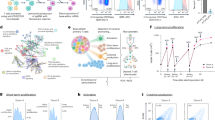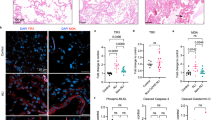Abstract
It has become clear that mutations in a variety of host genes possess the ability to influence the progression of HIV-1, prominent among them are the chemokines. Stromal cell derived factor-1 (SDF-1), an α-chemokine, is a natural ligand for HIV-1 coreceptor-CXCR4 and a potent chemokine that blocks infection by X4 viruses. Nucleotide G to A transition (nucleotide position 801 with respect to the ATG initiation codon) in the 3′-untranslated region of SDF-1 RNA is implicated in having disease-modifying effects. We have screened 100 normal healthy individuals from north India where HIV-1 is spreading at an alarming rate. This mutation is present in 40% (40 out of 100) individuals, 32% being heterozygous and 8% being homozygous for this mutation. This mutation showed Mendelian inheritance in one of the families studied. This observation could be important in understanding the progression or pathogenesis of HIV-1 in India. We also show that multiple proteins bind in the 3′-untranslated region of the SDF-1 RNA.
This is a preview of subscription content, access via your institution
Access options
Subscribe to this journal
Receive 6 digital issues and online access to articles
$119.00 per year
only $19.83 per issue
Buy this article
- Purchase on Springer Link
- Instant access to full article PDF
Prices may be subject to local taxes which are calculated during checkout
Similar content being viewed by others
References
Berger EA, Murphy PM, Farber JM Chemokine receptors as HIV-1 coreceptors: roles in viral entry, tropism, and disease Ann Rev Immunol 1999 17 657–700
Oberlin E, Amara A, Bachelerie F et al The CXC chemokine SDF-1 is the ligand for LESTR/fusin and prevents infection by T-cell line-adapted HIV-1 Nature 1996 382 833–835
Cocchi F, Devico AL, Garzino-Demo A et al Identification of RANTES, Mip-1α and Mip-1β as the major HIV-1 suppressive factors produced by CD8+ T cells Science 1995 270 1811–1815
Winkler C, Modi W, Smith MW et al Genetic restriction of AIDS pathogenesis by an SDF-1 chemokine gene variant Science 1998 279 389–393
Brambilla A, Villa C, Rizzardi et al Shorter survival of SDF-1–3′A/3′A homozygotes linked to CD4+ T cell decrease in advanced human immunodeficiency virus type 1 infection J Infect Dis 2000 182 311–315
Balotta C, Bagnarelli P, Corvasce S et al Identification of two distinct subsets of long-term nonprogressors with divergent viral activity by stromal-derived factor-1 chemokine gene polymorphism analysis J Infect Dis 1999 180 285–289
Ikegawa M, Yuan J, Matsumoto K et al Elevated plasma stromal cell-derived factor 1 protein level in the progression of HIV type 1 infection/AIDS AIDS Res Hum Retroviruses 2001 17 587–595
Hattori K, Heissig B, Tashiro K et al Plasma elevation of stromal cell-derived factor-1 induces mobilization of mature and immature hematopoietic progenitor and stem cells Blood 2001 97 3354–3360
Dubois-Laforgue D, Hendel H, Caillat-Zucman S et al A common stromal cell-derived factor-1 gene variant is associated with the early onset of type 1 diabetes Diabetes 2001 50 1211–1213
Ramamoorti N, Banerjea AC Novel SDF-1 gene mutations in simians: presence of GG to AA transition in the 3′ untranslated region AIDS 2000 14 1279–1281
Banerjea AC, Joklik WK Reovirus protein σ1 translated in vitro as well as truncated derivatives of that lack up to two-thirds of its C-terminal portion exists as two major tetramolecular species that differ in electrophoretic mobility Virology 1990 179 460–462
Ta M, Vrati S Mov34 protein from mouse brain interacts with the 3′-non-coding region of Japanese encephalitis virus J Virol 2000 74 5108–51115
Author information
Authors and Affiliations
Corresponding author
Additional information
This work was supported by a grant from the Department of Biotechnology, Government of India, to the National Institute of Immunology, New Delhi, India, and to the corresponding author (ACB).
Rights and permissions
About this article
Cite this article
Ramamoorti, N., Kumarvelu, J., Shanmugasundaram, G. et al. High frequency of G to A transition mutation in the stromal cell derived factor-1 gene in India, a chemokine that blocks HIV-1 (X4) infection: multiple proteins bind to 3′-untranslated region of SDF-1 RNA . Genes Immun 2, 408–410 (2001). https://doi.org/10.1038/sj.gene.6363800
Received:
Revised:
Accepted:
Published:
Issue Date:
DOI: https://doi.org/10.1038/sj.gene.6363800
Keywords
This article is cited by
-
A microRNA binding site polymorphism in the 3′ UTR region of VEGF-A gene modifies colorectal cancer risk based on ethnicity: a meta-analysis
Journal of the Egyptian National Cancer Institute (2022)
-
HIV infection in India: Epidemiology, molecular epidemiology and pathogenesis
Journal of Biosciences (2008)



